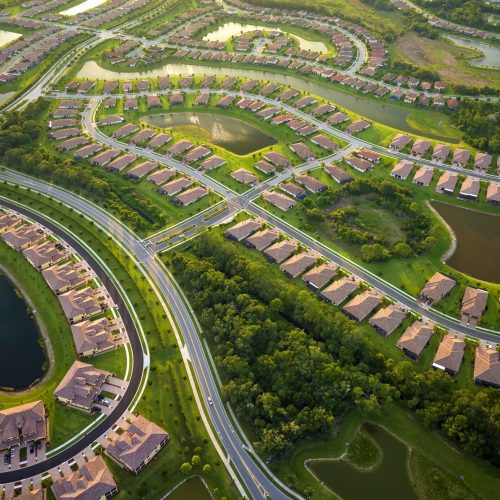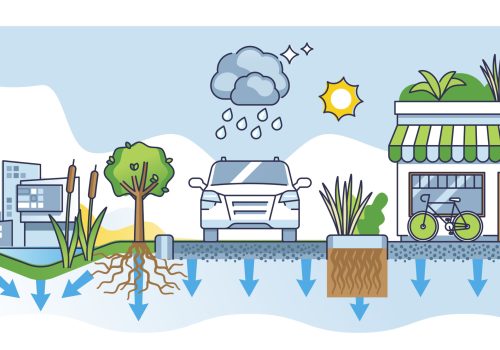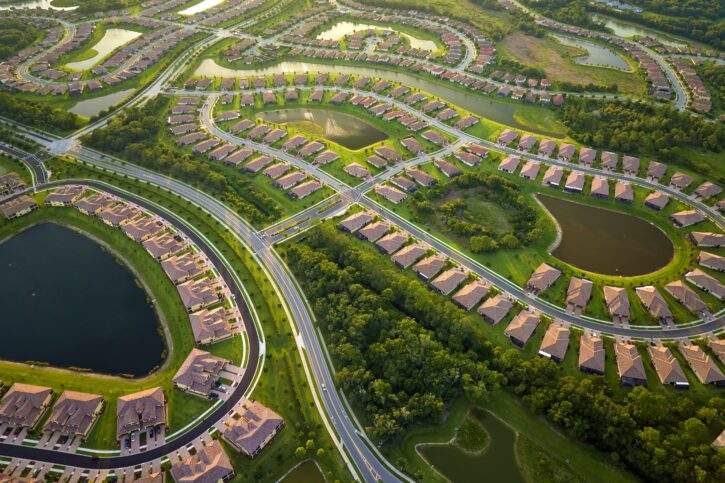THE CLOUD
HOUSE – BELOW GROUND SURFACE & FOUL WATER DRAINAGE DESIGN
Nimbus Engineering Consultants were appointed to provide a Below Ground Foul and Surface Water Drainage Design for The Cloud House. The London Borough of Camden granted planning permission for the proposed development which consisted of a pair of new semi-detached houses. Peter Morris Architects created a joyful design to bring an “element of fun” to the North London neighbourhood.
The planning permission for the ‘self-build’ project didn’t present any conditions relating to Sustainable Urban Drainage Systems (SuDS), as the original design featured a living wall and permeable paving. However, we advised the client that Thames Water and Building Control will request a reduction in surface water runoff leaving the site, via the inclusion of Sustainable Urban Drainage Systems (SuDS), therefore, we discussed the idea of attenuation with restricted flow for each dwelling. This included the locations of the proposed attenuation and storage estimation to get some likely values for the required volume.
The nature of the site is such that, there is not much available space for attenuation and other drainage assets, however in order to ensure that our solution reduced the surface water run leaving the site, in order to reduce any future flood risk at the site or elsewhere, our team looked at various scenarios to ensure that we would provide a viable yet cost effective solution, that would satisfy all relevant parties.
Our experienced team advised that the sewerage system in the vicinity of the site would likely be combined, however in accordance with Building Regs Part H, both Foul and Surface Water, require separating until the final manhole before the flows are discharged into the receiving combined manhole. Therefore, in order to provide the most cost effective solution to the client, we proposed a gravity connection to one of the manholes within the site boundary, however, due to the levels at the site, we also had to propose one gravity connection to the main combined sewer in the main road.

Once the necessary information and plans were delivered by the client, the Nimbus team got to work, our initial step involved carrying out high level calculations to understand what storage volumes were likely to be required in our design. Further to this, we engaged the clients in a conference call to review our outline proposal, we welcomed feedback and discussed any queries.
The location of the site meant that we also had to consider the foundations from the adjacent school, meaning there was even less available space than we originally thought.
Further to the clients approval of the design, Nimbus approached Thames Water to submit a S106 connection application for the proposed design. In our experience, this procedure often includes extensive liaison with the technician reviewing our design, in this instance, the process involved a fair amount of correspondence, however, eventually our skilled team were able to secure the consent.
We successfully
submitted the design to the client and eagerly await to see The
Cloud House to come to life on Grand Designs. Peter Morris and Emily
Kennedy have been delightful clients to deal with, and although this was a
tight site, the fact that they had considered some source control Sustainable
Urban Drainage Systems (SuDS) early in their initial design helped them
understand the requirements and need for the attenuation required.



